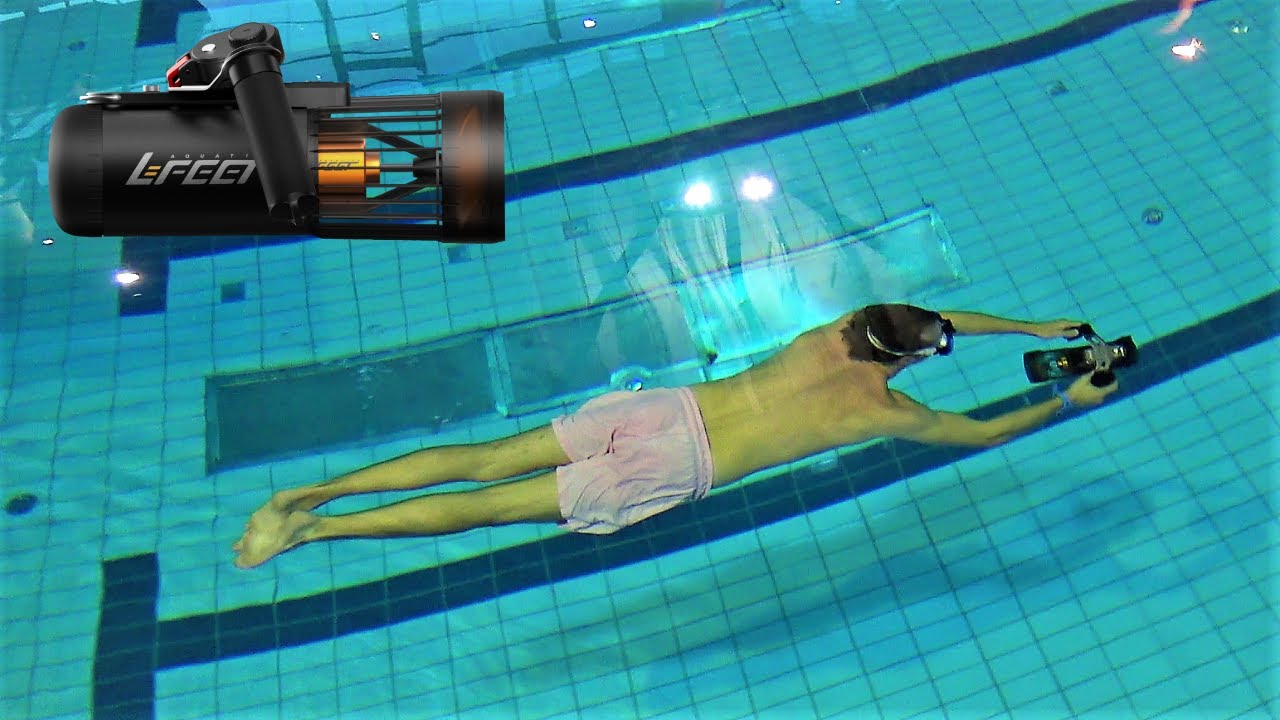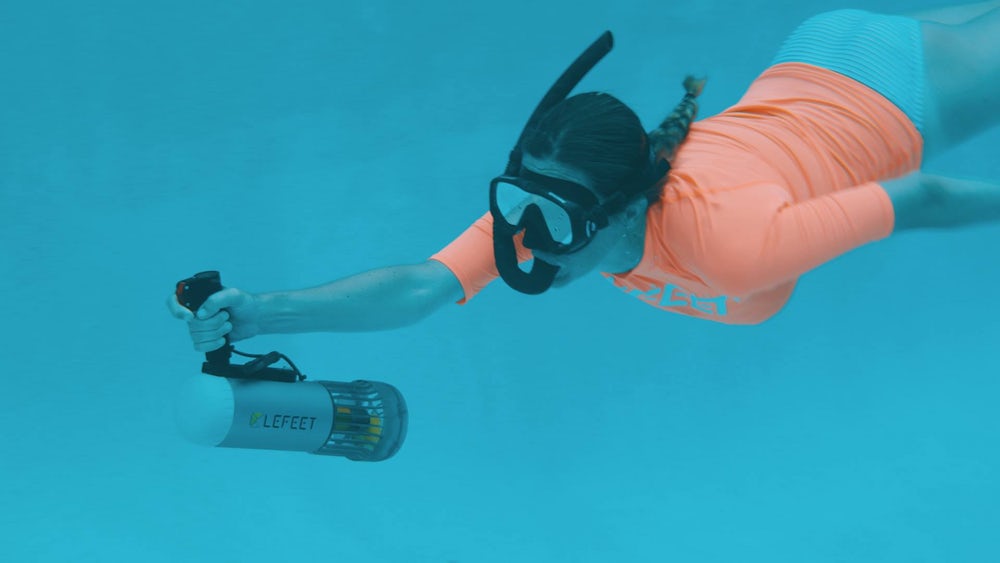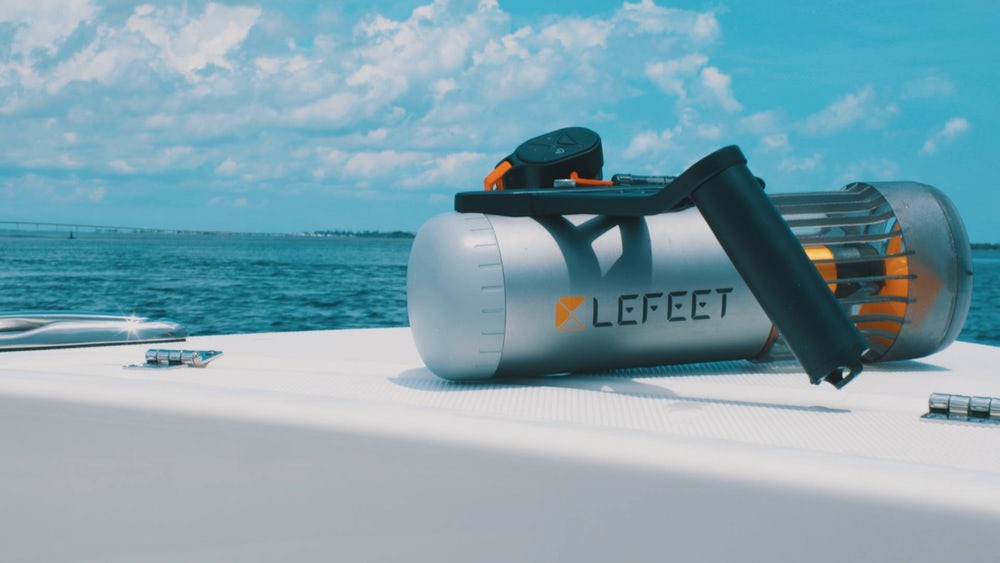At the heart of the S1 is an aluminum-bodied propulsion unit containing a 550-watt electric motor that can take snorkelers, divers or swimmers up to a top speed of 3.5 mph (6 km/h). On top of that unit is a rail system, upon which different wireless control modules can be mounted.

Users who want to keep one hand free can go with a center-mounted single-handed module, while those wishing to maintain more control can opt for a two-handed module with hand grips on either side. There's also a wider version of the two-hander which can accommodate two of the propulsion units between the grips, for double the thrust.
Utilizing an optional kit, it's also possible to mount the propulsion unit on the underside of a kayak or standup paddleboard – remember, the controller is wireless. In this way, the S1 is similar to the Bixpy Jet and the Scubajet.

A pressure-sensitive throttle allows for continuously-variable control of the speed. By contrast, some of the other underwater scooters we've seen simply let users switch between a couple of preset speeds.
Power is provided by a replaceable flight-safe lithium battery pack, which provides up to 60 minutes of run time per six-hour charge. It should be noted that the one-hour figure is based on travelling at the S1's slowest speed of 1.9 mph (3 km/h) – it drops to 30 minutes when going full-tilt. The whole scooter weighs a claimed 2 kg (4.4 lb), and can descend to a maximum depth of 30 meters (98 ft).

If you're interested in getting a LeFeet S1, Kickstarter pledge levels start at US$329 for a package that includes a dual-grip controller. The planned retail price for that setup is $399. Assuming it reaches production, delivery is estimated for November.
According to newatlas











